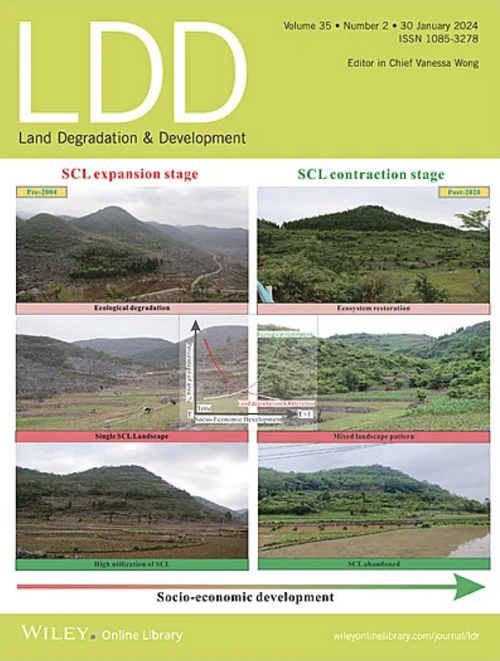Temporal and Spatial Carbon Stock Changes and Driving Mechanisms Based on Land Use Multi-Scenario Modeling: An Assessment of SDGs15.3—A Case Study of the Central Yunnan Urban Agglomeration, China
IF 3.6
2区 农林科学
Q2 ENVIRONMENTAL SCIENCES
引用次数: 0
Abstract
Carbon stock is a key element of land-based ecosystems and serves as one of the key indicators for assessing SDG 15.3, which undergoes direct or indirect effects due to changes in land use. Utilizing the central Yunnan urban agglomeration (CYUA) as the study region, we constructed the Markov-Multi-Objective-patch-generating land use simulation (Markov-MOP-PLUS) coupled model to model changes in land use across four distinct scenarios: the sustainable development scenario (SDS), economic development scenario (EDS), ecological protection scenario (EPS), and natural development scenario (NDS) for the year 2030. The Integrated Valuation of Ecosystem Services and Trade-offs (InVEST) model was employed for assessing the land carbon stock and spatially identifying and comparatively analyzing the changes over time and across different areas in land carbon reserves in the study region between 2000 and 2030. We used the optimal parameter geographic detector (OPGD) model for exploring the driving factors of spatial differentiation in carbon stocks and quantitatively assessing SDG 15.3. The study revealed that according to the four scenarios modeled, the study region's future land use is expected to show expanded watershed and construction zones. Water areas expanded most rapidly in the EPS, with NDS and SDS behind; the highest growth rate of built-up land areas was in the EDS, followed by NDS. The estimated carbon reserves for the study region in 2030, under four scenarios, are ranked as follows: EPS (2.581 × 109 tons) > NDS (2.571 × 109 tons) > SDS (2.570 × 109 tons) > EDS (2.567 × 109 tons), suggesting that ecological protection measures can promote the recovery of regional ecosystems' carbon stocks. The spatiotemporal variation in carbon stocks is influenced by multiple factors, with slope being the dominant factor driving the spatial differentiation of carbon stocks in the region. Furthermore, the interactions among these factors are not independent in their impact on carbon stocks. The SDG 15.3.1 indices for the four scenarios in 2030 all show a decreasing trend, and although the situation of land degradation has improved, none have met the SDG 15.3 target. This research offers valuable guidance for policymakers working on SDG targets and land use planning.求助全文
约1分钟内获得全文
求助全文
来源期刊

Land Degradation & Development
农林科学-环境科学
CiteScore
7.70
自引率
8.50%
发文量
379
审稿时长
5.5 months
期刊介绍:
Land Degradation & Development is an international journal which seeks to promote rational study of the recognition, monitoring, control and rehabilitation of degradation in terrestrial environments. The journal focuses on:
- what land degradation is;
- what causes land degradation;
- the impacts of land degradation
- the scale of land degradation;
- the history, current status or future trends of land degradation;
- avoidance, mitigation and control of land degradation;
- remedial actions to rehabilitate or restore degraded land;
- sustainable land management.
 求助内容:
求助内容: 应助结果提醒方式:
应助结果提醒方式:


